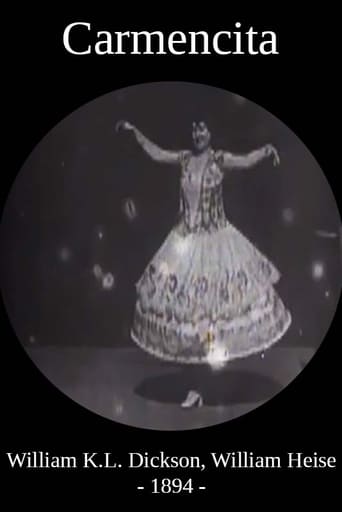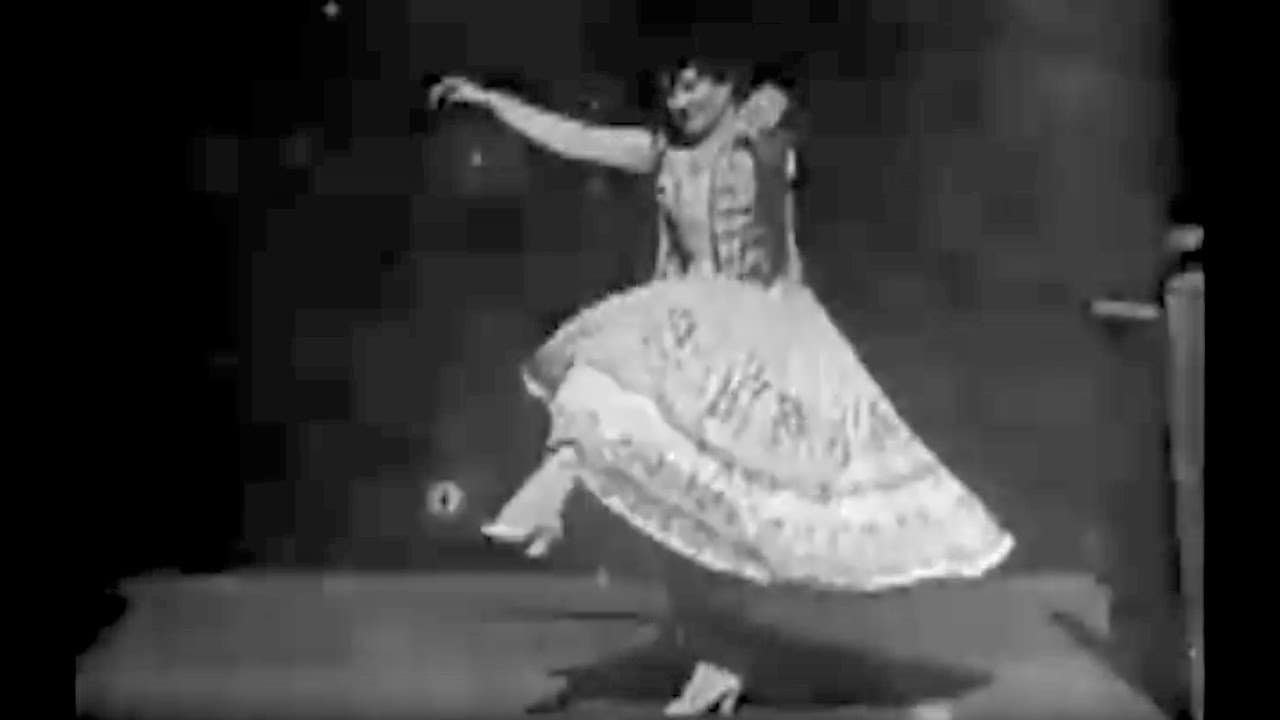kobe1413
"Carmencita" is a short video of a woman dancing. She is obviously a veteran performer, probably from Broadway. She does some pretty nice moves, especially from 1894, where simple spinning was enough to entertain the masses. When compared to scenes such as the "Imperial Japanese Dance" or the "Sioux Ghost Dance", Carmencita shows a little bit of flash.This was another collaboration between W.K.L. Dickson and William Heise. They recorded this short film for Edison Laboratories. They were constantly looking for subjects to shoot. They shot many different acts from the vaudeville scene, from dancers to gymnasts.
F Gwynplaine MacIntyre
Here's a perfect example of the pitfalls of writing about films: especially films from the earliest days of the cinema. The other IMDb'ers who have posted reviews of Carmencita's performance for Thomas Edison's Kinetograph camera are apparently reviewing footage from Edison Motion Picture #28, which has been reissued on DVD as part of "Edison: The Invention of the Movies". Well, I am likewise reviewing Carmencita's performance for Edison's Kinetograph. However, the performance I saw (and which I'm reviewing) was a different performance by the same dancer, filmed on the same occasion -- the second week of March 1894 -- but photographed on a different negative and not included in the DVD.I saw this film (the one I'm reviewing, mind) in October 2006 at the Cinema Muto festival in Sacile, Italy. The print screened at Sacile was retrieved from the National Fairground Archive in Sheffield, England. (WKL Dickson, who shot many films for Edison, was an Englishman; he shipped prints of many of his Edison films to Britain.) When the Sheffield print was found, it was at first assumed to be one more copy of the existing Carmencita footage (the one on the DVD). However, after restoration, it was discovered that this was a 'lost' movie which no living person knew had ever existed in the first place: a completely different take of Carmencita's performance, differing significantly from the 'known' version. Since Edison's catalogue lists only one version, this 'lost' film has been provisionally titled "Carmencita #2" and catalogued as EMP 28.1.This is certainly not a 'belly dance', despite a previous IMDb'er's comment. Carmencita's performance here is virtually identical to the one in the DVD version, with one interesting difference: in the version found at Sheffield and screened at Sacile (the one I saw), the señorita concludes her performance by curtseying to the camera (or to its operator?) and offering a moue.Frame-by-frame comparisons make it clear that these are two separate 'takes': two completely different pieces of footage of the same dancer giving similar but not identical performances. I'd be keen to learn which one was shot first. Carmencita's acknowledgment in the Sheffield version might imply that this was the conclusion of her performance, therefore the final take. Or perhaps this was her first take, and Dickson may have felt that Carmencita's gesture -- appropriate enough for a live audience watching a stage performance -- was inappropriate for a movie, and he required her to do a retake. Barring authorisation for a trip yesterwards to March 1894 (grease up the time-portal!), it's unlikely that anyone will ever know which version was shot first.On its own merits as an historic artefact, I'll rate "Carmencita #2" 6 points out of 10 ... plus one point extra (7 total) because this film and its twin sister -- placed side by side -- serve as a caution to those who would review old-time movies, or who would criticise other reviewers' film scholarship: sometimes the version which you saw, and the version which I saw, really are NOT the same movie!
diddleysquat
This short film was included several years ago in a documentary about Thomas Edison and his early movie-making experiments. It's timeless - an absolute classic!The video itself is jumpy and splotchy, and primitive by even the earliest silent film standards. But by anyone's measure, the dancer is amazingly good, and this peek into the distant past is well worth watching, if the opportunity arises.It would be nice if someone put together for commercial sale a collection of very early experimental film projects like this one. Few are likely to be as fascinating as this, but it's amazing to see how dramatically video technology has changed - and how relatively little change there has been in our entertainment preferences.
Brian-59
"Carmencita Dancing," one of a series of Edison short films featuring circus and vaudeville acts, displayed the... um... "talents" of a zaftig belly-dancer who agreed to undulate before the camera of the famous "Black Maria" studio. The dance was originally intended to be played in a Kinetoscope, a single -person arcade viewer connected to Edison's more famous invention, the phonograph. Through a pair of crude headphones, the latter device supplied an asynchronous soundtrack of "hootchie-cootchie" music. The Kinetograph camera here employed is so new -- even to its inventors -- that director Dickson has drastically "overcranked" the film, unintentionally producing one of the first examples of slow-motion. Carmencita's titillating movements were considered by many to be scandalous. Thus, the film prompted some of the earliest discussions of film censorship.


 AD
AD


